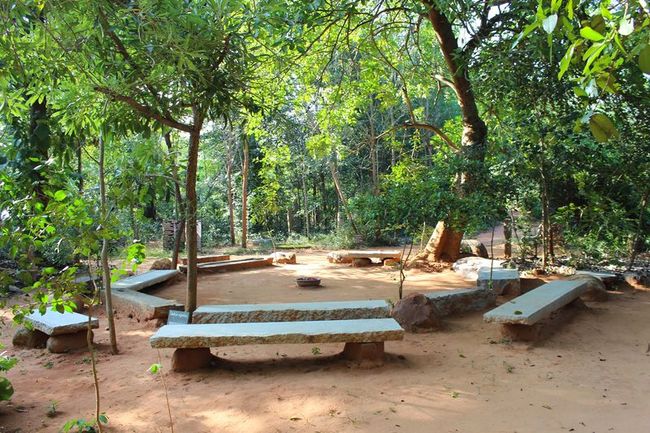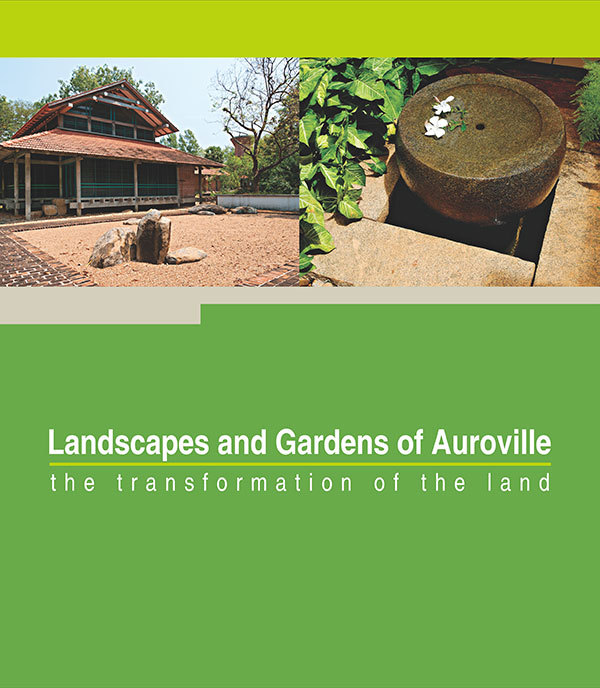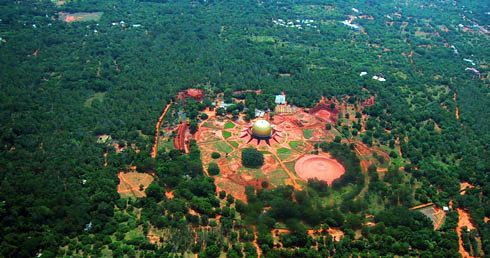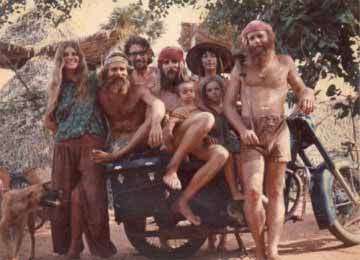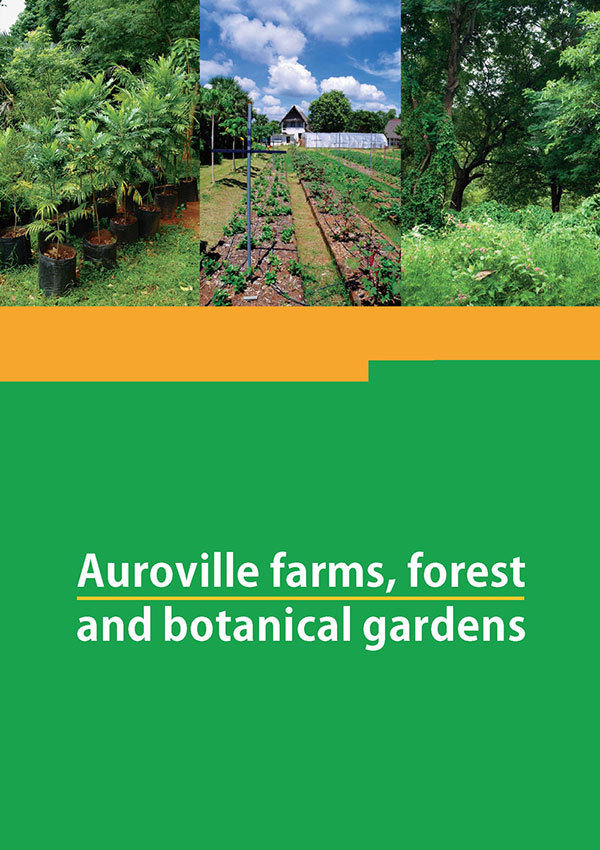Last updated:
Natural regeneration of vegetation

Auroasha was born and brought up in Auroville. She is a translator by profession, an amateur photographer and a nature lover. This paper is based on a presentation she gave at Pondicherry University during her studies there (1996-1998).
The natural regeneration of vegetation is a dynamic process by which life recolonises land when the vegetation has been partially or totally destroyed. Life recovers the lost ground through the mechanism of the succession of species.
The dynamism of the succession of species
To demonstrate this process, we can look at what happens after a lava flow or major landslide. Most often the first species that begin the colonisation are lichens and mosses, as their spores have the ability to travel long distances with the wind from undisturbed areas.
The first stage
These pioneers initiate the process of biomass production: the necessary organisation of the mineral medium on which they grow. They create the first elements of living soil through the interaction of their root systems with the mineral medium. These plants, not more than a few millimeters in height, spread in large patches using and storing tiny amounts of moisture and nutrients which further enable them to propagate themselves on and within the mineral surface.
The second stage
Over time the amount of soil created by their activity is adequate for the next generation of pioneers. Often these pioneers are members of the grass family: Gramineae. The combined action of their root systems on the minerals below and the accumulation of organic matter from the decay of their annual growth on the surface create conditions of soil-depth and capacity of water retention enabling the establishment of the following generation of pioneers: woody annuals and other herbaceous plants, deeper-rooted stragglers and shrubs.
The third stage
As the humus content and soil-depth increase, larger and larger specimens can exist and thrive in the slowly-improving conditions. Perennials eventually replace annuals. Sun-loving species are slowly displaced to the periphery of the expanding system and are replaced by permanent species requiring a sheltered environment at the beginning of their life cycles. In time, a stable community is established allowing an increasing diversity in the number of species, increasing density per unit of surface and increasing height of the canopy and depth of soil.
At this stage, the fauna has already begun participating in the process, concentrating and recycling nutrients, and most importantly serving as a vector of the vegetation e.g., seeds in the form of burs which cling to the body of small animals or seeds which travel in their digestive tracts. The flora uses the fauna in its strategy of seed dissemination.
The last stage
Ultimately, within the limitations of climate, soil and hydrology, the vegetation will reach the stage of maximum biomass per unit of surface and maximum stability, diversity and sustainability, which is called, by convention, climax vegetation.
Time scale
It has been estimated that this process could take as little as a thousand years in the humid tropics, though much longer in drier tracts, the moisture availability being the limiting factor in this case. In temperate lands it is much slower, the limiting factor being cold temperatures: the longer the cold season, the slower the evolution. (For example, in the north of Sweden today one can see that the process towards climax vegetation is not yet complete 10,000 years after the polar caps have receded.)
Man and vegetation
Since we as a species learned to master fire 10 to 20 thousand years ago, a certain degree of destruction of biomass-forest can be attributed to us. But the human population, still extremely small, could only have had a minimal influence on the well-established forest with its intricate regenerating capacity fully operational. The impact of man on the vegetation is considered to have been negligible until 5,000 years ago.
For the past 5,000 years, man with his most powerful tool, fire, has taken precedence over other natural causes as a modifier (if not destroyer) of the vegetation: first as a hunter (with fire), then as a herder (over-grazing), eventually as an agriculturist (soil-erosion, eradication of non-edible plants, "weeds"), and today more and more as an industrialist (pollution of the air, water and soil) and urban dweller (spreading impervious surfaces: roofs, roads, parking lots, etc.).
South India
In south India, the climate has been relatively stable for a couple of million years. At a time when the forefathers of man were not yet called Homo sapiens, stable climax forests, similar in their species-mix to the now few remaining examples, were well-established over most of the peninsula.
In this time-scale, apart from minor fluctuations in temperature, the Coromandel Coast has witnessed successions of dry and wet spells, large natural fires following intense periods of drought and floods during wet periods lasting sometimes thousands of years. Certain localised catastrophes have also certainly occurred such as large-scale cyclones, earthquakes and rapid sea coast fluctuations following cycles of glaciation. None of these events, though, was drastic enough to compromise the system over a large area for a long period of time.
The Pondicherry region
In the Pondicherry region there are no longer any representatives of undisturbed climax forest. Nonetheless a few relic patches of the old vegetation at different levels of degradation still remain. Some interesting examples: Marakkanam (Forest Department), temple groves (Puthupet, Pillaichavadi, Mudaliarchavadi, Kottakarai), and temple land (Bommapalayam). Some individual trees can also be found around village ponds or in the hedges surrounding agricultural fields.
(1) Drypetes sepiaria, temple grove, Puthupet.
(2) Chloroxylon swietenia, Pondicherry University campus, Pondicherry.
(3) Cassia fistula, Pondicherry University campus, Pondicherry.
(4) Calophyllum inophyllum, Pondicherry Engineering College campus,
Pondicherry.
(5) Bauhinia racemosa, field hedge, Pillaichavadi.
(6) Diospyros ebenum, temple grove, Pillaichavadi.
(7) Lepisanthes tetraphylla, temple grove, Mudaliarchavadi.
(8) Aglaia roxburghiana, field hedge, Mudaliarchavadi.
(9) Pterospermum xylocarpum, temple grove, Mudaliarchavadi.
(10) Mallotus philippensis, temple land, Bommapalayam.
(11) Butea monosperma, temple land, Kuilapalayam.
(12) Garcinia spicata, temple pond, Kuilapalayam.
(13) Sapindus emarginata, temple grove, Kottakarai.
(14) Strychnos nux vomica, temple grove, Kottakarai.
The Auroville plateau
On the Auroville plateau, mostly in ravines and their surroundings where thirty years ago only thorn bushes and some Gramineae species had survived, it is now possible to observe an increasing diversity of species recolonizing the lost ground, especially in protected areas. On very degraded land the recolonisation process can still be observed by the courageous pioneers: Gramineae (15) (Heteropogon contortus), Cyperaceae (16) (Cyperus pygmaeus), or (17) Boraginaceae (Coldenia procumbens).
Over the past ten years the grazing pressure has dramatically decreased, mostly due to the employment provided by urbanisation and because children are going to school, rather than herding goats and cattle. With protection Gramineae cover the entire ground and the thorny shrubs become erect: Heteropogon contortus (Gramineae), (18) Catunarega dumetorum (thorny shrub). Thorny plants begin to give way to unarmed species, (19) Dodonaea viscosa.
In some areas, the process of succession has been relatively fast. For example, bush clumps based around palmyra trees (20) Borassus flabellifer, the wild date (21) Phoenix humilis or (22) Phoenix sylvestris, harbor species of (23) Ficus amplissima, (24) Ficus benghalensis, (25) Morinda tinctoria, (26) Bridelia retusa, (27) Atalantia monophylla, (28) Tarenna asiatica, or (29) Maytenus emarginata. Birds eat the fruits of these species and spread their seeds in their droppings. In this growing system, sheltered by the preceding species, relics of original climax species such as (30) Memecylon umbellatum, (31) Ixora arborea, (32) Ochna obtusata, (33) Maba buxifolia, (34) Canthium diccocum, (35) Syzyigium cumini, (36) Buchanania angustifolia, or (37) Strychnos colubrina can re-establish themselves.
In areas near reintroduced fruiting (38) Mimusops elengi (one of the largest trees of the original climax vegetation), wild seedlings (39) appear abundantly in a sheltered environment. Where small mammals such as the civet cat and fruit bat have started to participate in disseminating seeds of the climax species, one can now find seedlings of (40) Caryota urens, (41) Canthium dicoccum, and (42) Bassia longifolia. In places that have had the longest protection (25 years), where older trees shade the ground, it is now possible to observe the re-establishment of the undergrowth of the climax forest with species such as (43) Murraya paniculata and (45) Murraya koenigii.
The responsibility of man
Plants through photosynthesis are the primary producers; man and animal are the consumers. Due to his ignorance, man is weakening and destroying the process of natural regeneration of vegetation, especially threatening the climax species with the consequent loss of diversity.
Some of us can directly help the primary producer, the vegetation, by planting trees and protecting the wilderness. Most of us can help by individually controlling the impulse to consume, and developing our sense of gratitude for the sanctity of the undisturbed vegetation.
Download photo graphs
Photographs: (1), (2), (3), (15), (17), (26), (38), (43), Regina Braun
Others: Auroasha
-

Sadhana Forest Community
-
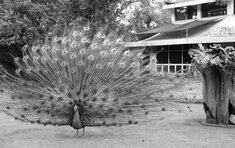
Gratitude Animal Farm
-
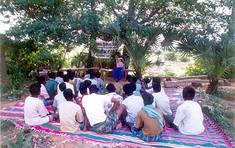
Aranya Forest and Sanctuary
-

Palmyra - Centre for ecological landuse and rural development
-
Forest Group
-
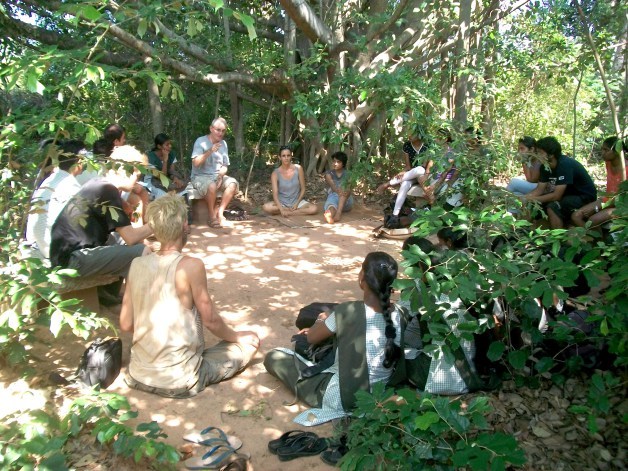
Pitchandikulam Forest and Bio-Resource Centre
-

Environmental work
-
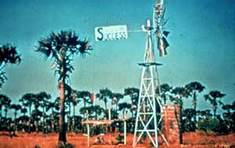
Success Sanctuary
-

Hermitage
-
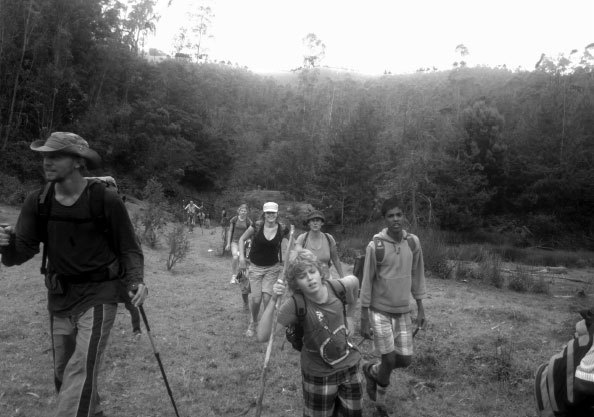
Auroville Nature Camp - Connecting to Nature and Each Other
